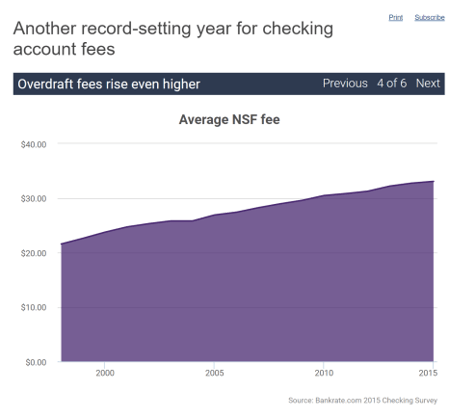Top 10 Tips to Compare Bank Accounts for Students
Being a student is already hard enough, but being a student and managing finances for the first time is even more difficult.
For many students, the trek off to college is also a jump into the world of personal budgets and finances. This is why comparing student bank accounts is so vital to setting up a student for financial success.
Heading down to the closest bank and setting up an account could be risky when starting a bank account for students.
While setting up an account at the same bank as the parents can have serious perks, like immediate money transfers and budget advice, it may not be the best option. The easiest way to find out is to compare bank accounts for students from several banks.
Parents are often not only a monetary a resource for students while they are away at college; they also act as an advisor, mentor, and supportive friend.
It’s imperative that both students and their parents or guardians feel at ease with the financial decisions they’ve made.
Below are 10 tips for student account comparisons that will satisfy the needs of the student and his or her parents.
See Also: Banks with Free Checking Accounts | Top Ways to Find Free Checking Account Banks
Bank Accounts for Students Should Be Convenient
Check for ATM and branch locations near the areas you’ll frequent



Image Source: Bank Accounts for Students
Larger bank chains often provide more ATM options across the country. Online banks can offer ATM usage, but sometimes it’s limited to larger cities and downtown areas.
Local community banks and credit unions are usually not the best option for a bank account for students since they don’t have branch or ATM locations across the country. Comparing student bank accounts regarding their location options is an excellent first step.
If the only ATM is across town from all of the places a student will frequent, then he or she is much less likely to go there. Stopping by an out-of-network ATM and wasting the $4.50 on a fee may seem more convenient than driving across town.
Be sure to choose a bank with adequate ATM locations when comparing student bank accounts.
Evaluate deposits and online banking options
When comparing student accounts, keep in mind that most students don’t have a ton of income, so receiving money and making deposits should be hassle-free. Make sure that the bank you choose has options that allow easy check, cash, and electronic deposits.
Online banks sometimes don’t have the option for cash deposits, which could leave your student without money until your electronic transfer posts.
Online banks do have some excellent benefits, but you should check to see if the one you are considering offers in-person deposits or withdrawals from any ATM. If it does, you can likely look for those locations in your area on its website.
Be sure to compare student bank accounts by their mobile app and online making options. Most banks offer mobile deposits and apps for smartphones at no extra cost. If this is an option, students can transfer funds, monitor their transactions, and check their balance all at the touch of a button.
This is sure to help your tech-savvy student pay more attention to his or her spending.
Banks that have more advanced deposit and banking options are often best for college students. During a student account comparison, a bank without online banking options wouldn’t be the best choice. Students with access to a user-friendly app on their phone are more inclined to track their spending.
Ease of setup for scheduled payments and transfers
In most cases, students are learning to manage finances for the first time. An excellent tool to help them stay on top of it is the ability to schedule payments and transfers online with their bank. Look for these options when comparing student bank accounts.
A student who set ups a schedule to transfer just $30 dollars into savings at the end of each month is more likely to establish a habit of creating an emergency fund in the future. A student that monitors spending habits surrounding a bill that is scheduled to come out will probably practice better bill paying habits.
When comparing student bank accounts, selecting the correct account helps students adapt to their new responsibilities.
Don’t Miss: Best Online Savings Account | How to Find the Best Online Savings Account
Bank Accounts for Students Should Have Minimal Fees
Traditional bank accounts can have hidden fees. In some cases, special bank accounts for students may be offered by banks. Most banks offer fee waivers with student IDs for many accounts. While that does help to alleviate hidden fees in most cases, some fees that come with bank accounts are not eligible to be waived for students.
For this reason, it is important to pay very close attention to all of the details regarding fees associated with account maintenance and management when comparing bank accounts for students.
Confirm the overdraft fee on the account
When comparing student accounts, be on the lookout for high overdraft fees which can leave a student paying $35 dollars for that $5 meal in the diner. According to one study, the average overdraft fee is more than $33 per transaction.
This means a burger and frozen yogurt out with friends before your student’s transfer posts could end up costing him or her more than $70! Considering this when doing a student bank account comparison could save you money in the long run.
Don’t forget to ask if this fee can be reduced or even waived for student bank accounts.



Image Source: Bankrate.com
All-in-One Change Management Tools
Top Rated Toolkit for Change Managers.
Get Your Change Management Tool Today...
Check for minimum balance requirements
While most bank accounts have minimum balance requirements and penalties if you drop below that amount, student bank accounts often don’t have minimum balance requirements. Since most students have little to no income, this type of account is ideal.
When gathering information for your student checking account comparison, it’s a good idea to look for an option that requires only a small minimum balance.
Some banks will waive these requirements for a student. Bank accounts for students without a minimum balance requirement are a better option for first-time account holders.
Most banks have a minimum amount needed to open an account.
These vary based on account type. Some are relatively small, around $25, and others are closer to $100. This should be considered when comparing bank accounts for students, but not weighted heavily. Instead, consider this an expected expense.
Be sure to not confuse the minimum balance required to open an account with the requirement for maintaining a specific minimum balance when doing a student bank accounts comparison.
If you are uncertain what the requirements are, make sure to ask before making any decisions to avoid surprises later down the line.
Related: No-Fee Checking Accounts | Top Tips to Finding Checking Accounts with No Fees
Pay close attention to ATM withdrawal fees
Just like many of the other fees associated with traditional accounts, ATM withdrawal fees may be waived when signing up for a student bank account.
These fees may seem small but can really add up when out-of-network ATMs are used frequently. That makes ATM withdrawal fees an important to thing to consider when doing a student account comparison.
If these fees are required, confirm the amount. The average hovers around $4.50 per withdrawal, but some banks charge more than that.
The average fee from last year was at its highest ever. ATM fees also vary based on location. For example, ATMs in Atlanta cost a full dollar more than those in Kansas City.
The last thing students need is a cost that could go up or down based on where they are in the world.
Two or three $20 dollar withdrawals at an out-of-network ATM can quickly turn $60 into over $73 dollars. If that happened every week, that student would be paying over $50 in annual withdrawal fees alone. Make sure these fees are considered when looking at bank accounts for students.
Free checks and debit cards
How many times did you lose your wallet in college? How many times did you forget your debit card downtown?
If your bank charges you a fee for replacement cards, then when you lose your card or forget it somewhere, you’ll have to pay to get a new one! That could really add up. Checking to see what fees you’ll pay when doing a student account comparison will help avoid additional fees.
Some bank accounts for students offer free and paid options for debit cards and checks. Others have different features and designs.
You can even get personalized cards from some banks, although these usually have fees. This fee may be waived for students largely because of cost. When comparing student bank accounts, looking closely at the terms and fees with debit cards is essential.



Image Source: Compare Student Bank Accounts
Checks may seem obsolete these days, but there are still some bills that require their use for payment. Using checks could also help you avoid credit card fees charged by merchants when paying.
If you want your paycheck direct deposited into your account, your employer may require a voided check.
In some cases, employers only offer direct deposit, and you don’t want to be stuck paying check fees just to get your paycheck. A good student checking account comparison will factor this in.
Fees associated with debit cards, replacement cards, and checks should be considered when you compare student accounts.
These fees are sometimes hidden and not featured on the abbreviated list of fees on bank brochures.
Popular Article: Top Ways to Open a Checking Account Online for Free with Bad or Good Credit
Bank Accounts for Students Should Set Them up for a Financially Successful Future
Factors to consider when you compare student bank accounts don’t just involve location and circumstances during college – they should extend to life after college. Income levels change, and monthly living expenses increase after your graduation.
You’ll also want to factor in when student loans need to start being paid off and any plans to save to get there.



Look for post-graduation maintenance fees or time limits on student fee waivers
When evaluating student bank accounts, it’s important to examine expiration dates closely. Some banks may have a limit on the amount of time that a customer is eligible for fee waivers. It isn’t ideal to choose this type of account for a student.
If the time limit for no maintenance fees is four years, and a student decides to go to graduate school, he or she could end up with unprepared fees during the first grad school semester.
When performing a student bank account comparison, look for banks that offer no maintenance fee checking after graduation for students.
This is an excellent benefit as it gives the student the opportunity to adjust to new responsibilities before having to worry about spending limits and balance maintenance.
For example, a bank account that normally requires a $100 dollar balance minimum with a 2-year student fee waiver will leave you with a $100 minimum balance before graduation. When reviewing a student checking account comparison, make sure to check this amount.
Evaluate and choose relevant additional benefits for your student bank account
Some bank accounts offer discounts on travel or other services for students that could be beneficial during their time in college.
This could also be helpful immediately after college if a student intends to travel for interviews, internships or volunteer opportunities. It could even help him or her take that backpacking trip across Europe.
Thinking a few steps ahead about what your student will do after college will go a long way in helping set him or her up for a successful financial future.
Look for a one-stop shop
Some banks will give you money for using their other services while others offer lower interest rates for home and auto loans to those who maintain a bank account there. Often, they will give you money for setting up retirement accounts with them as well. You could even receive additional cash from certain banks when setting up a savings account.
Since these services are something students will likely need in the future, they are important to consider when you look at a student accounts comparison.
Students who know they will need these services in the near future should weigh these offers heavily since it could help them save money in the long run.
Conclusion: How to Compare Student Bank Accounts
Life after college is full of adjustments, and it’s better if hidden bank account fees don’t pop up unexpectedly. Having the option to have zero or significantly reduced fees and balance minimum requirements can provide a cushion during that adjustment period.
Taking this into consideration when comparing student bank accounts will give your student peace of mind after college.
It gives him or her time to focus on important details that set one up for financial success long into the future – things like learning how to budget finances, pay bills on time, and spend within one’s means.
If the appropriate account is chosen after comparing student bank accounts, your student will be set up for a successful future.
This period of time is also excellent to determine how much he or she will be saving every month and schedule that transfer into savings on the last day of the month. Individuals are more likely to keep that amount inside their account if they are in the habit of having it transferred automatically.
Considering these 10 tips when performing a student bank account comparison will ensure that your student is paying attention to his or her spending habits and planning for a successful future.
If you chose a bank account that grows with your student and a bank that offers options to help him or her later in life, that student will likely feel comfortable enough to ask questions and find out more about opportunities that could save him or her money.
Read More: How to Find the Best Banks with Free Checking and No Minimum Balance
AdvisoryHQ (AHQ) Disclaimer:
Reasonable efforts have been made by AdvisoryHQ to present accurate information, however all info is presented without warranty. Review AdvisoryHQ’s Terms for details. Also review each firm’s site for the most updated data, rates and info.
Note: Firms and products, including the one(s) reviewed above, may be AdvisoryHQ's affiliates. Click to view AdvisoryHQ's advertiser disclosures.



